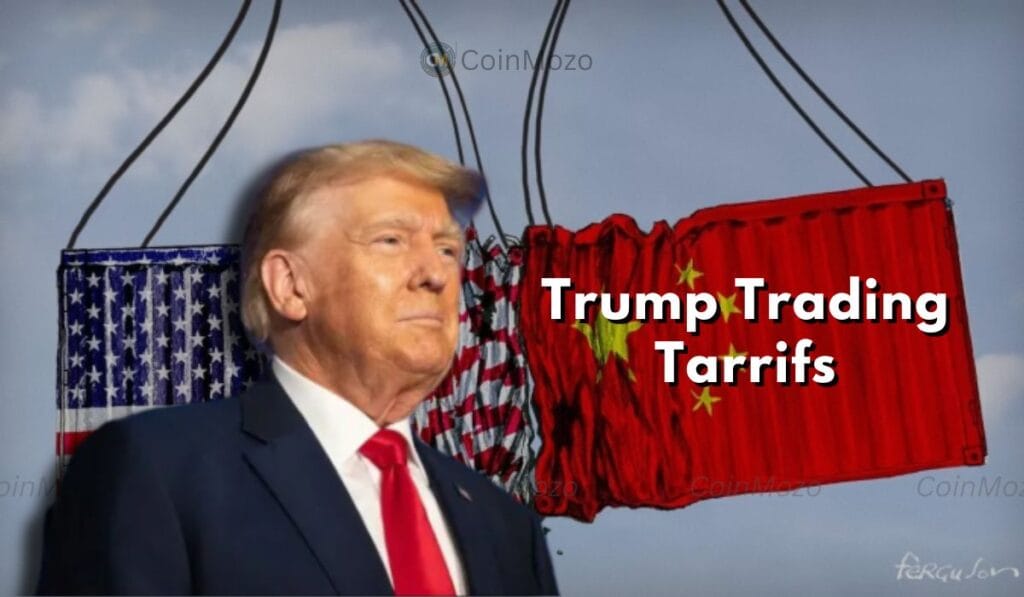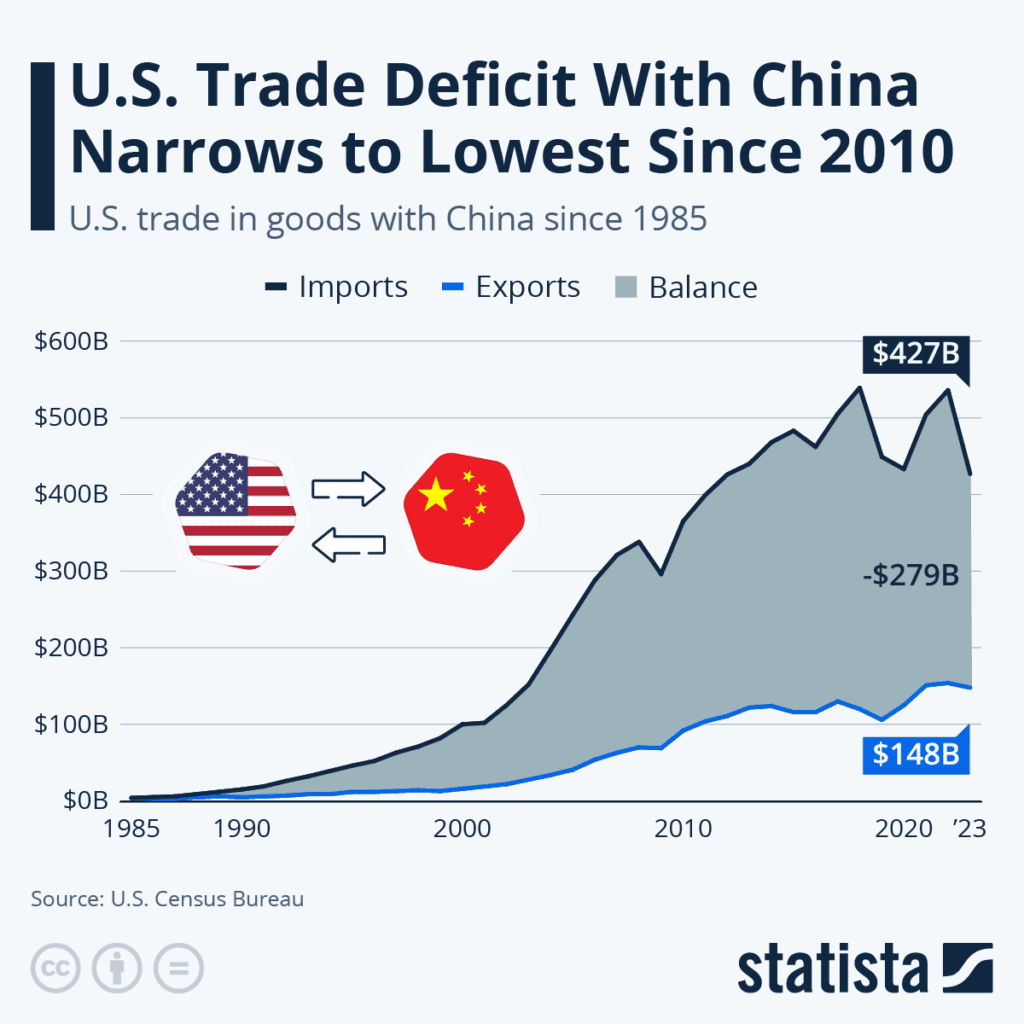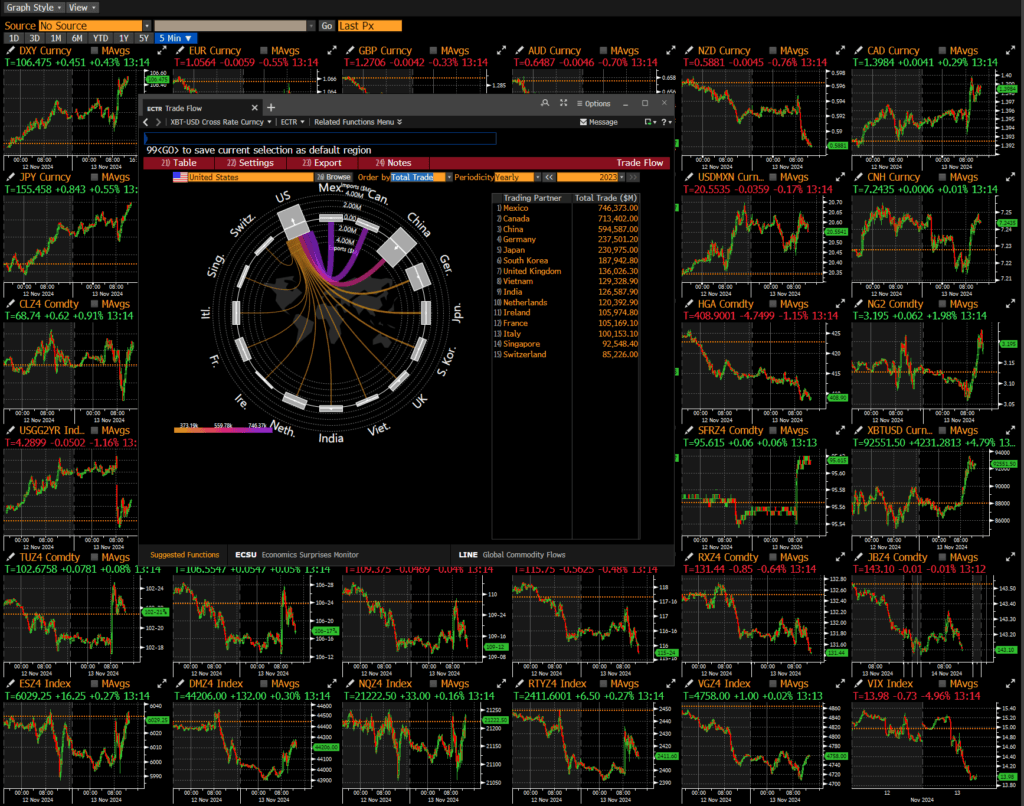The US economy collapse is on the edge. Economists warn that new taxes suggested by former President Donald Trump could create a huge crisis, eventually leading towards a US economy collapse by 2026.
Trump’s proposed tariffs have sparked serious concerns about their potential impact on the United States economy. These policies, by raising corporate and consumer costs, have the potential to cause inflation, slow economic growth, and eliminate jobs. If these dangers are not adequately controlled, the US economy collapse by 2026.

China is responding by establishing global trade ties, but its own economic challenges mean it is not insulated to the consequences. Meanwhile, America’s friends are walking carefully, weighing devotion to the US against their own economic interests.
What Are Trump’s Tariffs?
Trump’s strategy involves implementing high taxes on imported goods:
- All imports are subject to a tax of 10-20%.
- Taxes on Chinese imports might be as high as 100%.
Trump’s goal is to “extract funds” from other countries and improve the US economy. However, experts disagree, describing this method as risky. Morgan Stanley economists say that these taxes would increase inflation and hinder economic development.

Why Tariffs Could Cause a U.S. Economy Collapse
Higher Costs for Everyone
Taxes make goods that are imported more expensive. For businesses, this translates into greater material and product expenses. Unfortunately, firms are unlikely to take on these costs; instead, they will pass them on to consumers. Everyday things like vehicles, phones, and computers may face significant price increases.
For example:
- A 60% tax on Chinese goods, along with current duties on electric vehicles, may devastate the auto sector.
- Technology businesses such as Apple and Microsoft, which depend on worldwide supply chains, could face rising production costs.
Rising Inflation
The Federal Reserve has worked hard in recent years to control inflation, but new rates have the potential to reverse all of that success. With prices rising across the board, inflation might skyrocket, removing the gains of current rate decreases.
Higher inflation frequently results in higher interest rates, making it more expensive for individuals and businesses to borrow money. This combination may bring the country closer to a US economy collapse.
Job Losses
Industries that depend on imported goods, such as manufacturing and retail, may need to lower costs to survive. This frequently leads to reductions in staff, which harm workers and reduce consumer spending, which is critical for economic growth.
Global Reactions: How China and the World Are Responding
China’s Strategy
China is not sitting idle. Chinese President Xi Jinping is speaking out against Trump’s taxes at global conferences such as the G-20. He advocates for free trade and urges other countries not to follow the United States’ lead.
China is also strengthening connections with Germany, France, and South American states. Xi has invested in big infrastructure projects, such as a $1.3 billion port in Peru, to enhance economic links.
However, China is facing its own set of issues. The country’s vulnerability originates from a failing real estate market and deflation. Economists fear Trump’s tariffs could reduce China’s GDP, worsening its economic problems.
America’s Allies
Associated nations like as Canada, Australia, and the United Kingdom are facing difficult options. While they appreciate their relationship with the United States, many are concerned about Trump’s aggressive motives. Some leaders are considering implementing their own tariffs or establishing new trade deals to protect their economies.
Domestic Implications for the U.S.
Political Risks
While Trump’s followers may endorse his “America First” policy, the general public may suffer as a result of higher prices and job losses. Swing states, where voters are especially sensitive to economic issues, may reject these initiatives if they cause hardship.
Economic Spiral
The combination of increased costs, weaker growth, and possible job losses is a disastrous prescription for the US economy. If these concerns worsen, analysts fear that the country could face US economy collapse completely by 2026.
What’s Next?
The problem is difficult. Tariffs aim to encourage home industry by increasing the cost of foreign goods. However, they risk generating broad economic destruction.
China is expected to continue to create global ties, while the United States may become more isolated if Trump’s tariffs discourage trading partners. Domestically, the pressure on consumers, businesses, and the government may increase, bringing the economy closer to the brink.

Tariffs as a solution to economic problems may appear appealing at first glance, but their long-term effects could be terrible. Trump’s tariffs risk forming a US economy collapse, affecting not only Americans but the entire world, by raising prices, decreasing growth, and straining global trade agreements.
To prevent this result, authorities must carefully weigh the costs and advantages of protectionist measures. Cooperation, rather than isolation, may hold the key to long-term economic stability and progress.
Also Read: User Recovers $129 Million USDT After Phishing Attack
